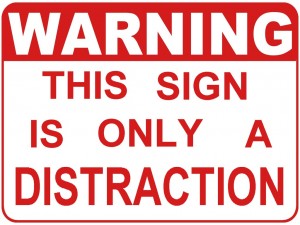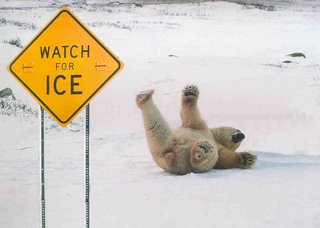 Ever been in a crowded subway car when a gunfight broke out? I have. It’s not a fun altercation.
Ever been in a crowded subway car when a gunfight broke out? I have. It’s not a fun altercation.
That incident from 20 years ago popped back into my brain when someone was shot and killed in the NYC subway system recently. Apparently some strangers exchanged words, and then blammo. (That’s the short version. Fuller version at Scott Greenfield.)
My experience with a gunfight occurred on an uptown Seventh Ave. express heading into Penn Station. At rush hour. Two guys started pushing each other, about 10 feet away from me.
There were a few people between me and the scufflers, but in a packed car, if one person moves quickly it reverberates. A few shouts from strangers to cool it. And when New Yorkers yell at strangers to cool it, you know something really odd is going on.
We try hard to keep to ourselves. Because New Yorkers love to pretend nothing is happening, even when it is. We don’t look into the eyes of our fellow passengers. There is no end to the possibilities of what may happen, too many of which are negative.
And then a couple shouts of “Gun!” Along with everyone else in the car, I dove to the floor. And I was happy. Happy to be on the floor of a filthy rush hour subway car. With someone else on top of me.
“Pop. Pop.” Two shots.
We pulled into Penn Station — with all those commuters on the platform thinking they were going to pile into that subway car and make their way home, as a tsunami of people flooded out.
I peeked back after exiting. There were two men on the floor. One holding a gun to the other. Neither moving.
The news that night reported a scuffle took place with pushing between the two men. One pulled a pistol. Then the other wrestled it away from the owner and shot him twice with his own gun.
Now I’ll explain why these two sudden and terrifying incidents actually matter in a simple trip and fall case. Stay with me here, because this time I think I have an actual point to make.
A great many trip/slip and fall cases focus on the defect, whether it’s ice, busted sidewalks, potholes, stairs, whatever. The defense is twofold: Either it’s too small to be actionable, or so large that it’s open and obvious. It’s all about the defect. Look, look, look at the defect. It’s tiny (or alternatively only a blind man could miss it).
Now here’s the problem, and the challenge for the plaintiff’s attorney: It isn’t enough to focus on the defect. Sure you have to prove it, but in a busy city like New York, there are a million distractions, some static and some dynamic. Your client is looking at those too.What was the reason that the defect wasn’t seen?
The static distractions are the fire hydrants, food carts, sidewalk signs and parking sign poles, trash cans and trash bags, store windows, dog droppings, sidewalk grates, and other such stuff of daily life.
But the dynamic ones are more important: These constitute the walkers, runners, vendors, baby carriages, dogs and bicycles that are everywhere, some moving fast, some slow, and some doing all they can to make sure you look at them.
And that is in addition to the hustlers who may deliberately bump you, dropping a cheap bottle of wine or eyeglasses, and demand that you pay for the damage you caused.
Why are these dynamics more important? Because you don’t want to inadvertently bump into your fellow New Yorker. Why? See gunshot stories above.
We don’t like to talk about this much, but it’s on everyone’s mind as we zig and we zag between the static and dynamic distractions of the walkways. An inadvertent bump into another is one of the disconcerting and discomfiting interactions of subway and sidewalk life, for it involves fear of The Altercation.
We don’t want to have this anxiety, but we do. Because we don’t want The Altercation. It’s big city life, and we’d like to get safely to wherever the hell we set out to go with as little hassle as possible, thank you very much.
That’s why, on the subway, New Yorker’s don’t look at each other. Sure, looking another in the eye might be a sign of love. But it may also be one of aggression. And you don’t want your glance to be “mistaken.”
Know how you can tell who the tourists are? They look at other people on the subway — though in all fairness the pastel shirts of some give them away long before that.
Where was I? Oh yeah, so we don’t always look down when we walk. We don’t always see the static defects that blend into the background and, quite frankly, shouldn’t even be there. We mostly look for the dynamics around us, trying to avoid the cars, bicycles, crazy taxi drivers and each other.
The lawyer that focuses solely on the defect may well lose. Sure, it could be a deceptive walkway, like these stairs, poor lighting, or an infirmity of the pedestrian that makes the defect more difficult to discover or navigate.
But the defect, which represents a trap, also exists in a much larger environment and context that is filled with other dangers to our well-being.
If you take the slip/trip fall case, the client ought to be able to reconstruct his surroundings to answer the question of why the defect was missed. And I don’t mean the easy questions of lighting or personal disabilities. But what were the static and dynamic distractions that existed in the few seconds before the fall?
You can have completely different results despite a defect being identical. In one case, you might have someone walking down a narrow and crowded subway stairwell, and miss the ice patch as he strives to avoid bumping his fellow commuters.
But if the reason for that same slip was that he was sending a text message — adding his own distraction to the multitude that already exist — there is as good chance he will lose.
To the practitioners out there, don’t just ask about the defect in the walkway. Find out what the potential client was looking at instead. Because the jury will want to know.

